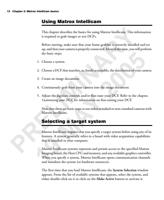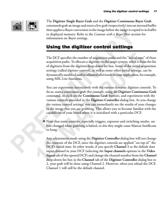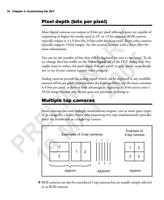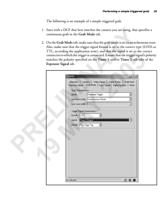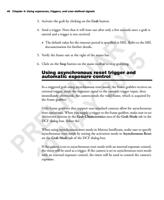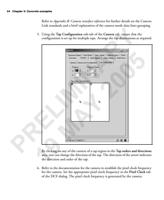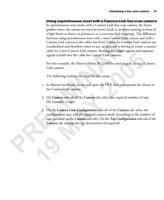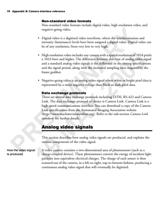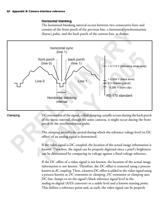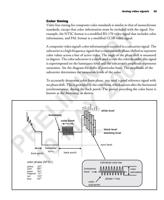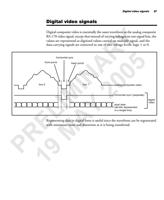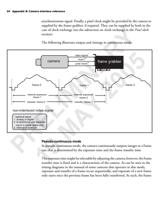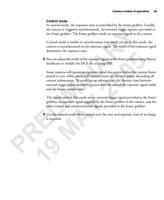
Camera modes of operation 93
Note that "internal" refers to the camera end and "external" refers to the frame
grabber end. In addition, connections mentioned in the following sections are
general ones. Particular cameras might require additional connections for auxiliary
control signals. All required connections are specified in the camera manual.
Frame scan cameras
Frame scan cameras can be used for capturing 2-dimensional images. Frame scan
Y cameras can be operated in any of the following modes: continuous mode,
pseudo-continuous mode, trigger mode, asynchronous reset mode, control mode,
and long exposure (integration) mode.
R Continuous mode
A 5 In continuous mode, the camera continuously outputs images at a fixed frame
rate, for RS-170 and NTSC standards, is 30 frames or 60 fields per second (North
IN 0 American timings) or for CCIR and PAL standards, 25 frames or 50 fields per
second (European timings). In general, the exposure time is the reciprocal of the
0 frame rate. By adjusting the camera, you might be able to use a shorter exposure
time. The frame rate, however, does not change. In continuous mode, exposure
of the current frame and transfer of the previous frame occur concurrently.
IM 2 Therefore, in this mode, exposure time cannot exceed the reciprocal of the frame
rate.
L Y If the camera outputs an analog video signal where both the horizontal and vertical
synchronization signals are combined with video data (composite video signal),
then that signal alone is required by the frame grabber to operate in continuous
E A mode. Some cameras can output an analog video signal where only the horizontal
synchronization signal is merged with the video signal, although this is not typical.
In such a case, a separate digital vertical synchronization signal (for example, a
R M frame enable or a trigger signal) is supplied by the camera to the frame grabber or
vice-versa.
P There is also another case in which the horizontal and vertical synchronization
19signals are generated separately.
❖ Separate digital synchronization signals can also be used even when the camera
outputs a fully composite analog signal.
If the camera outputs a digital video signal, both the hsync and vsync are usually
separate digital signals provided by the camera or supplied by the frame grabber.
Some cameras combine the hsync and vsync to form a single digital composite












